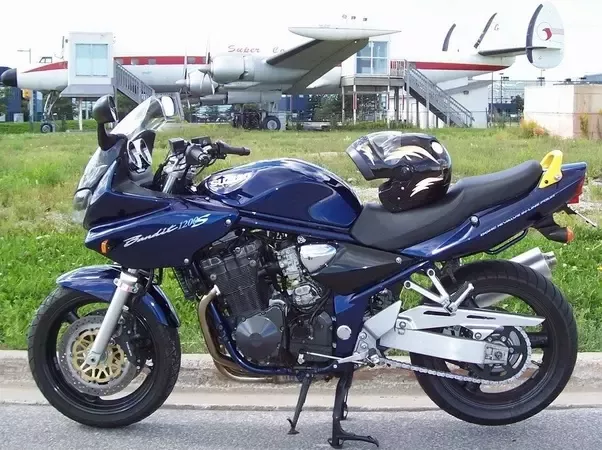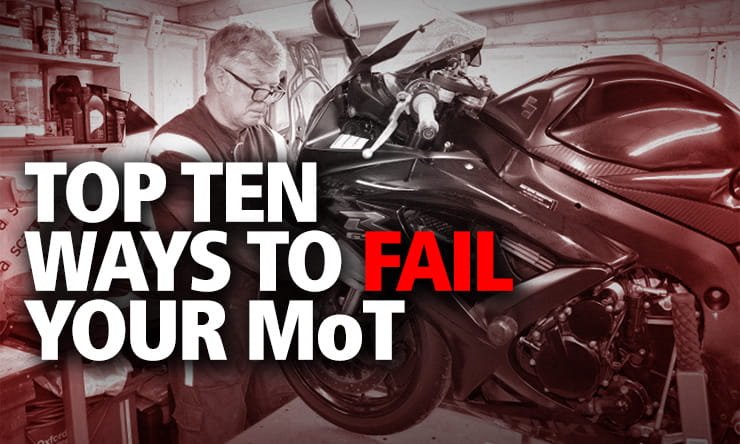On average, a well-maintained motorcycle engine can last between 50,000 to 100,000 miles. Significant factors include maintenance, type, and usage of the bike.
Motorcycle engines have a wide range in longevity that hinges on multiple elements, much like their four-wheeled counterparts. A key to ensuring that your motorcycle engine stands the test of time is rigorous adherence to maintenance schedules. Brand and model reputations for durability play a crucial role, as some engines are built for longevity, while others may prioritize performance over lifespan.
Regular oil changes, timely replacements of filters, and the use of quality parts can help maximize the mileage you get out of your motorbike’s heart. Riding habits also significantly impact engine life; motorcycles that are ridden hard may experience more wear and tear, reducing engine lifespan. Owners who treat their bikes with care and keep up with preventative maintenance create the potential for mileages that run into the six figures.
Table of Contents
Motorcycle Engine Longevity
Motorcycle engines often spark a sense of excitement and freedom on the open road. But just like any machine, they don’t last forever. Riders often wonder about the lifespan of their two-wheeled companions. Many factors contribute to how long these engines run before they need a major overhaul or replacement.
Factors Influencing Engine Life
The longevity of a motorcycle engine is not set in stone. Multiple factors play crucial roles in determining its lifespan.
- Riding Style: Aggressive riding can shorten engine life.
- Maintenance: Regular oil changes and tune-ups extend engine durability.
- Environment: Harsh weather can impact engine components
- Build Quality: High-quality materials usually last longer.
- Usage: Frequent short trips may lead to more wear.
Comparative Durability Of Motorcycle Engines
Comparing motorcycle engines reveals differences in their potential longevity. Engines from different brands and types have varying lifespans.
| Engine Type | Average Lifespan (Miles) |
|---|---|
| Sport Bikes | 20,000 – 30,000 |
| Cruisers | 40,000 – 60,000 |
| Touring Bikes | 50,000 – 100,000 |
It’s evident that a well-maintained engine can lead to a longer, stronger life for your motorcycle. Make the most out of every mile by taking great care of your bike.

Credit: bikepics.com
Initial Quality And Maintenance
Motorcycle engines can last for thousands of miles. The longevity often depends on two key factors: initial quality and maintenance. High-quality engines built by trusted manufacturers can surpass expectations, often running smoothly beyond 100,000 miles with proper care. Regular maintenance cannot be overlooked. It can mean the difference between an engine that lasts a lifetime and one that sputters out prematurely.
Role Of Manufacturing Quality
- Premium materials make engines more resilient.
- Reputable brands often implement rigorous testing.
- State-of-the-art technology enhances engine performance and lifespan.
A well-built engine from a reliable brand sets the foundation for high mileage success. Engines crafted with precision and robust materials are less likely to encounter early life failures. Such engines benefit from the latest tech advancements. These factors contribute to longer-lasting motorcycle powerhouses.
Impact Of Regular Maintenance
- Oil changes: Keep engine parts well-lubricated.
- Filter replacements: Ensure clean air and oil circulation.
- Regular inspections: Identify issues before they grow.
Maintaining your motorcycle engine is vital. Timely oil changes and filter replacements help to minimize wear and tear. Regular check-ups allow for early detection and repair of potential problems. These simple yet crucial steps dramatically extend the life of a motorcycle engine.
Mileage Lifespan Benchmarks
Mileage Lifespan Benchmarks often guide motorcycle enthusiasts in gauging an engine’s life expectancy. Beyond mere numbers, they showcase a bike’s quality, maintenance, and durability. Here’s what rider should know about the longevity bench markers for their two-wheeled companions.
Average Mileage Expectations
An engine’s heart beats in miles, but not all are destined for the same distance. Like any living thing, motorcycles thrive on care. The average motorcycle engine runs for about 50,000 miles. Yet this is not a finish line but a check-point; with regular service, many surpass this marker. Factors affecting lifespan include:
- Engine type and size
- Riding habits
- Consistent maintenance
High Mileage Milestones
The odometer may tell tales of high-mileage heroes. Mammoth milestones like 100,000 miles tell of well-kept machines. Touring bikes often hit these marks—engineered for the long road. Markers to note:
- 50,000 miles: mid-life for well-maintained engines
- 100,000 miles: the gold standard for high mileage
- 200,000+ miles: rare, remarkable, possible with exceptional care
Powertrains And Performance
Every rider wonders how long their motorcycle will stay revving on the roads.
Engine Types And Longevity
Different engines mean different lifespans. Let’s break it down:
- Single-Cylinder: Ideal for beginners. Lasts around 20,000 to 30,000 miles.
- Twin-Cylinder: Balances power and endurance. Expects 40,000 to 70,000 miles.
- Four-Cylinder: Packs a punch with a high rev limit. Can hit over 100,000 miles.
Performance Riding Vs. Engine Wear
Quick accelerations and redlining can wear an engine faster.
| Performance Riding | Engine Wear |
|---|---|
| Aggressive Launches | More stress on transmission |
| High RPMs | Quicker part degradation |
| Track Days | Potential for overheating |
Ride smart, maintain regularly and your motorcycle can surpass expectations.
Model-specific Endurance
When we dive into the realm of motorcycles and their lifespans, a significant factor surfaces: model-specific endurance. Different brands and models come with their own set of expectations regarding longevity. Let’s break down what you can expect from various manufacturers and their beloved two-wheelers.
Brand Longevity Reputation
Certain brands carry the torch for durability. Harley-Davidson and Honda are leaders in this race. With proper maintenance, these bikes often hit impressive mileage milestones. It’s not just about how many miles they rack up, but the quality of those miles too. These brands are known for engines that withstand the test of time and terrain.
Case Studies Of Notable Models
Each motorcycle model has a story to tell. Some have crossed deserts, while others have soared on highways for decades. Here we look at a few notables.
Honda Goldwing GL1800
- Mileage Prowess: Easily surpasses 200,000 miles
- Owner Feedback: Comfort matched with endurance
Harley-Davidson Sportster
- Robust Build: Known to surpass 100,000 miles
- Cult Status: Iconic with a trusted engine legacy
BMW R Series
- Engineering Excellence: Commonly reaches 150,000 miles
- Performance: Combines longevity with efficiency
These case studies offer a glimpse into varying endurance levels across models. The mileage achievements reflect the brands’ commitment to engine quality and the riders’ dedication to maintenance.

Credit: bikepics.com
Preventive Measures For Longevity
Preventive Measures for Longevity play a crucial role in how many miles a motorcycle engine can last. Consistent maintenance and smart choices keep engines running smoothly for years. A well-kept motorcycle engine can surpass 100,000 miles. This section outlines key practices and upgrades that help achieve this milestone.
Best Practices In Engine Care
Regular attention and the right techniques ensure long-term engine health. Follow these best practices:
- Oil Changes: Replace oil every 3,000 to 5,000 miles.
- Air Filter Maintenance: Clean or replace air filters as needed.
- Regular Inspections: Check for leaks, corrosion, and wear.
- Warm-up: Allow the engine to warm up before riding.
- Use Quality Lubricants: Select the right oil for your bike’s specifications.
Upgrades Enhancing Engine Life
Engine longevity benefits from strategic upgrades. Consider these options:
| Upgrade | Impact on Engine Life |
|---|---|
| High-Performance Air Filters | Better air flow, less debris, improved combustion |
| Synthetic Oils | Reduced friction, enhanced protection in extreme temperatures |
| Upgraded Spark Plugs | More efficient ignition, cleaner burn |
| Cooling System Enhancements | Reduced engine overheating risks |
Direct investment in quality parts and scheduled service extends bike life. Use manufacturer-recommended components for best results.
Signs Of An Aging Motorcycle Engine
Mileage often hints at a motorcycle engine’s life expectancy. A well-maintained engine can last 50,000 to 100,000 miles. Yet, like all machines, motorcycle engines show age. Detecting the signs early can save riders from unexpected troubles on the road.
Wear And Tear Symptoms
Recognizing wear and tear is key. Strange noises or vibrations often point to engine issues. Oil leaks, metal shavings in oil, and smoke from the exhaust are clear alerts. Keep an eye out for these:
- Odd engine sounds like knocks or pings
- Engine stalling or misfiring
- Decreased fuel efficiency
- Power loss, especially under stress
- Excessive exhaust smoke colors
- Oil spots under the bike or a wet engine
Diagnosing Reduced Engine Performance
Performance decline is a telltale sign of aging. Use these steps to diagnose:
- Check engine compression. Low readings can indicate wear.
- Test the ignition system for spark issues.
- Inspect air intake and fuel systems for blockages or leaks.
- Analyze exhaust for unusual smoke.
- Examine oil condition. Look for contaminant signs.
Routine maintenance can extend engine life. If performance drops, consulting a professional is wise. They can provide a detailed assessment and suggest the best course of action. Remember, the sooner you address these signs, the better your ride’s future.
When To Say Goodbye
Every motorbike journey must come to an end, but knowing when to retire your faithful machine can be tough. Engine longevity depends on maintenance and use; a well-cared-for motorbike can hit impressive mileage. Still, there comes a time you might contemplate parting ways. Now, let’s look closer at the signs that signal it’s time for a drastic decision.
Making The Decision To Rebuild Or Replace
A turning point for any rider is deciding between rebuilding and replacing an engine. Here are factors to consider:
- Age of Motorcycle: Older bikes might warrant a rebuild for enthusiasts of vintage models.
- Miles on Engine: High-mileage engines might require frequent repairs; a rebuild or replacement can mean less hassle.
- Condition: An engine with significant wear and tear likely needs a rebuild, or it’s time for a new motorbike.
- Cost: Compare the price of rebuilding versus buying a new or used engine.
The Economics Of Engine Replacement Vs. Motorcycle Replacement
Facing an engine overhaul can present a tricky economical question: Replace just the engine or the entire bike? Below are essential considerations.
| Engine Replacement | Motorcycle Replacement |
|---|---|
| Provides a fresh start for your current bike.Costs less than a new motorcycle.May increase the value of your bike. | Lets you upgrade to a newer model.Offers the latest features and technology.Includes a warranty for peace of mind. |
Consider the price of a replacement engine against the value of your motorcycle. Sometimes, the cost of repairs outweighs the bike’s worth. Research and calculate which option suits your finances and motorcycling needs best.

Credit: www.vikingbags.com
Frequently Asked Questions
How Long Do Motorcycle Engines Usually Last?
Motorcycle engines typically last between 50,000 to 100,000 miles. Regular maintenance plays a critical role in their longevity.
What’s Considered High Mileage For A Motorcycle Engine?
A motorcycle engine with over 20,000 to 30,000 miles is generally considered high mileage. Yet, proper maintenance can significantly extend a bike’s lifespan.
Is 20 000 Miles A Lot For A Motorcycle?
Twenty thousand miles isn’t necessarily high for a motorcycle, as lifespan depends on maintenance and type of use. Properly maintained bikes can exceed 100,000 miles.
Is 50000 A Lot Of Miles For A Motorcycle?
For a motorcycle, 50,000 miles is not exorbitant. Many bikes surpass this with regular maintenance. Longevity depends on the bike’s care, usage, and model.
Bottom Line
Concluding, a motorcycle engine’s lifespan hinges on maintenance and riding habits. Typically, expect between 20,000 to 50,000 miles, though well-kept units can surpass these figures. Remember, longevity stems from attentive care—ride wisely and service regularly for optimal engine health.




Leave a Reply